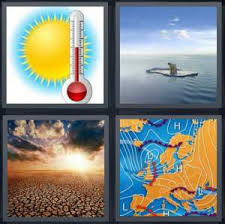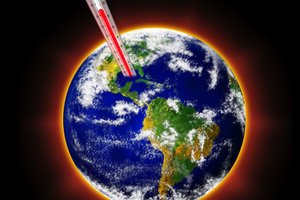In case you or someone you know still has any doubts about the fact of human caused climate change or of its devastating consequences and effects this article should make you think twice a hundred times. Events are unfolding along the lines that have been predicted for a few decades now. Have you seen any of the articles about how scientific knowledge and understanding of what is now occurring has been known for decades? This knowledge was buried and covered up by many people that could have gotten us started down the road to change a long time ago but didn’t. So now we’re beginning to pay the price for that dereliction of responsibility.
You know how I highlight the most salient passages of articles I send around in GREEN in order for you to get the main points quickly. And I usually put some of them in my introduction. Well, I found that in this article I was doing this to almost the entire piece. Therefore, I urge you to go to the article and just read it all. It won’t take you but a minute or two…
Last Year Broke Climate Records Left and Right. So May 2018
Last year was one for the climate record books, a new report confirms. From extreme heat, storms and wildfires to unprecedented sea ice loss, a look back at 2017 provides a stark illustration of global climate change in progress.
The annual “State of the Climate” report, compiled by NOAA, is published each year by the Bulletin of the American Meteorological Society. It contains contributions from hundreds of scientists and typically summarizes the previous year’s major weather events, climate change indicators and other global climate data.
On a worldwide scale, the influence of climate change is becoming ever clearer. As the report points out, 2017 was either the second- or third-warmest year on record, depending on the data set used — NASA data indicate that it falls right behind 2016, the hottest year ever recorded, in the ranks, while NOAA data indicate that 2015 was a slightly hotter year.
Just as importantly, data suggest 2017 was the hottest year on record that wasn’t influenced by El Niño. El Niño events, which are characterized by changes in Pacific Ocean temperatures, are known to cause temporary warming in some parts of the world. A particularly severe El Niño event may have influenced average global temperatures in 2015 and 2016 but had subsided by 2017.
That suggests climate change is now contributing to record-breaking global temperatures independently of the influence of natural climate variations.
That’s all in keeping with the continual rise of carbon dioxide concentrations in the atmosphere. Last year, scientists found that global emissions were on the rise again after three years of little to no growth, dashing hopes that they might have peaked for good (Climatewire, Nov. 13, 2017). At the same time, atmospheric carbon dioxide levels reached a worrying record high. In 2017, the global annual average carbon dioxide concentration rose to 405 parts per million — likely its highest level in the last 800,000 years, the new report notes.
In contrast, preindustrial carbon dioxide concentrations likely hovered around 280 parts per million. And when the Mauna Loa Observatory in Hawaii began taking measurements in 1958, CO2 levels were at 315 parts per million.
A variety of local climate events and milestones around the world in 2017 also illustrate the relentless progression of global warming.
In both the Arctic and Antarctic, sea ice hit record low levels throughout the year. In March, the month when Arctic sea ice reaches its greatest extent, the ice was found to be at its lowest maximum in the 38-year record. Its coverage was about 8 percent lower than the average maximum from the previous 30 years. And Antarctic sea ice shrank to its lowest ever daily extent in March.
The year also saw a series of unusually destructive storms — including Hurricane Harvey in Texas, whose extreme precipitation has been linked to climate change by multiple studies in the last year — and a spate of extreme wildfires, including record-breaking blazes in California and the Bolivian Amazon.
A look ahead
While 2018 is only halfway over, it’s shaping up to be a year of extremes, as well. Recent data show carbon dioxide concentrations already breaking records — observations from the Mauna Loa Observatory suggest that global CO2 levels reached a monthly average exceeding 411 parts per million in May, the highest monthly average ever recorded.
And although 2018 may not quite reach last year’s temperature thresholds, it may be on track to make it into the top five. Data from NOAA indicate that average global land and ocean temperatures in the first six months of this year were the fourth-highest on record, altogether about 1.39 degrees Fahrenheit higher than the 20th-century average.
Arctic sea ice reached its second-lowest maximum extent this past March, falling just behind 2017’s record. And Arctic temperatures also hit staggering heights this winter, climbing at least 45 degrees above their normal levels this past February.
And this summer, a rash of heat events around the world have set a series of all-time temperature records, from Algeria to California to Siberia. Devastating heat waves have already been blamed for dozens of deaths around the globe, including a flurry of heat-related mortalities in Quebec and in Japan last month.
Wildfire season is in full swing, as well. Nearly 100 people are already believed to have been killed by the ongoing blazes in Greece. Meanwhile, more than a dozen active fires are raging in California.
How this year will stack up to 2017, as a whole, remains to be seen in the coming months. Still, the year is already seeing records broken — just as 2017 exceeded the previous year in many ways.



